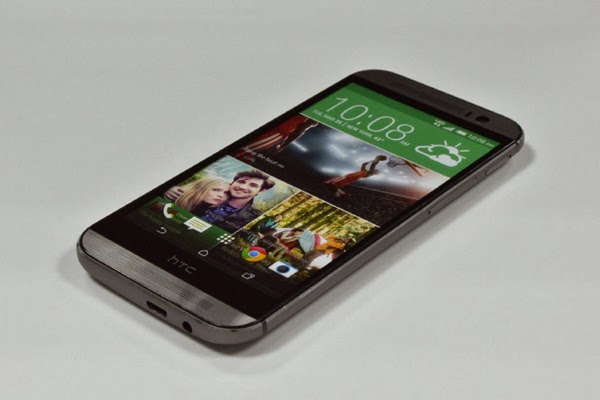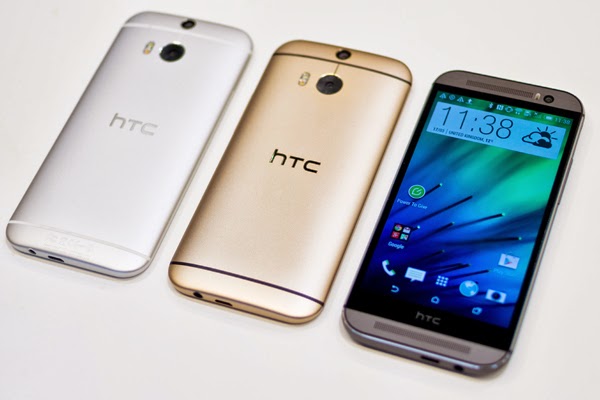HTC has now officially taken the wraps off its new flagship
smartphone – the new HTC One. Building from the strengths of the 2013 HTC One,
this year’s version offers a bit more of what its predecessor offered.
In the display department, the new HTC One packs a slightly
bigger 5-inch screen in contrast to the 4.7-inch from last year’s model.
However, screen resolution is still the same as its predecessor at 1920 x 1080
pixels which then equates to a lower pixel density.
The phone also comes with a Qualcomm Snapdragon 801 chipset
with a 2.5GHz Krait 400 processor (the model heading to the US, Europe, Middle
East and Africa will have a 2.3GHz Krait 400 CPU), 2GB of RAM, an Adreno 330
GPU and either 16GB or 32GB of expandable internal storage.
The new One will run on Android 4.4.2 KitKat with Sense 6 on
top. This means that the smartphone will have a number of features exclusive to
Sense-powered devices including Motion Launch, which as the name implies is an
app launcher activated by specific motion or gestures (for example, picking up
the device in landscape mode while pressing the volume button will wake the
phone and launch the camera app).
There’s also an extreme Power Saving feature which promises
users up to 30 hours of running by just using 10% of the phone’s 2600mAh
battery. The phone’s body is also improved, which now uses 90% metal in its
construction. Other notable improvements in the 2014 edition One include louder
BoomSound stereo speakers and an improved HTC Zoe that can now 20 images and
video in 3 seconds.
But the new One’s most interesting upgrade would have to be
its dual-camera setup. The phone packs a main camera that has a 4MP sensor and
a secondary camera that boasts half the resolution. According to HTC, the
second camera isn’t used to capture images and instead is used to gather depth
information.
The dual-camera setup will also allow the phone to create
cool effects such as background and foreground blur as well as post-shot
refocusing. Unfortunately, the Optical Image stabilization of the original HTC
One is now replaced by a digital stabilization.
Expand Specifications
| Dimensions | 146.4 x 70.6 x 9.4 mm (5.76 x 2.78 x 0.37 in) |
| Weight | 160 g (5.64 oz) |
| Display Type | Super LCD3 capacitive touchscreen, 16M colors |
| Display Size | 1080 x 1920 pixels, 5.0 inches (~441 ppi pixel density) |
| Display Protection | Corning Gorilla Glass 3 |
| Operating System | Android OS, v4.4.2 (KitKat) |
| Chipset | Qualcomm MSM8974AB Snapdragon 801 |
| CPU | Quad-core 2.3 GHz (US/EMEA)/ 2.5 GHz (Asia, China) Krait 400 |
| Graphics | Adreno 330 |
| Sensors | Accelerometer, gyro, proximity, compass |
| RAM | 2GB |
| Internal | 16/32 GB |
| WLAN | Wi-Fi 802.11 a/b/g/n/ac, Wi-Fi Direct, DLNA, Wi-Fi hotspot |
| Bluetooth | Bluetooth v4.0 with A2DP |
| NFC | Market/operator dependent |
| Infrared port | Supported |
| USB | microUSB v2.0 (MHL), USB On-the-go, USB Host |
| Battery Rating | 2600mAh |
| Primary Camera | Dual 4 MP, 2688х1520 pixels, autofocus, dual-LED (dual tone) flash |
| Camera Features | 1/3'' sensor size, 2µm pixel size, automatic simultaneous video and image recording, geo-tagging, face and smile detection, HDR, panorama |
| Video | 1080p@30fps, 720p@60fps, HDR, stereo sound rec., video stabilization |
| Secondary Camera | 5 MP, 1080p@30fps, HDR |
| GPS | A-GPS support and GLONASS |
| Card slot | microSD, up to 128 GB |
The HTC One also comes in a variety of colours including
gunmetal gray, glacial silver and amber gold. Moreover, HTC is including
several accessories into the mix such as a flip case, double dip case and a dot
view case to name a few. The One is now available in several markets for a
little over $800.













